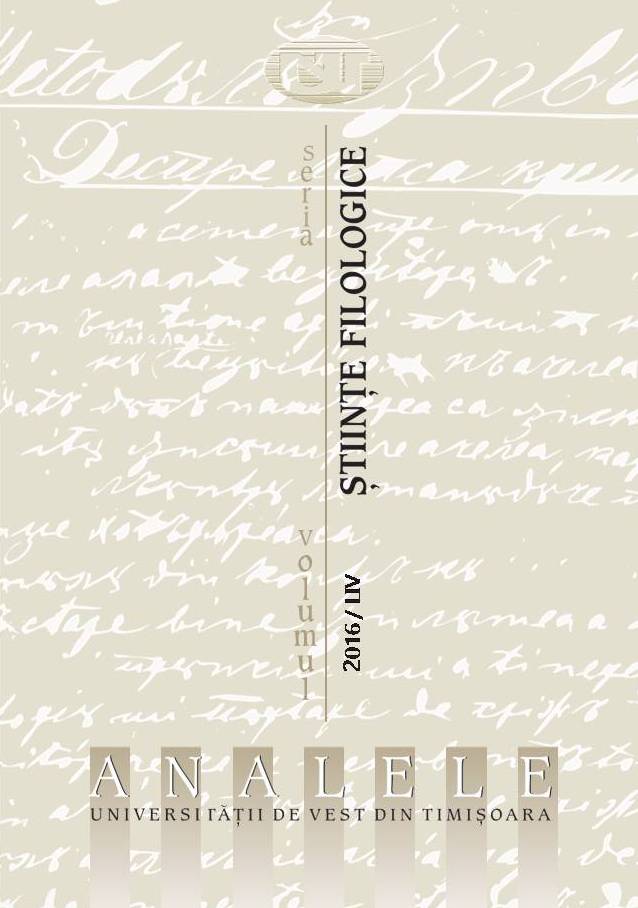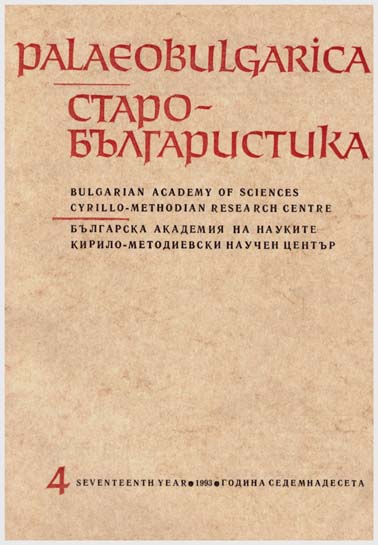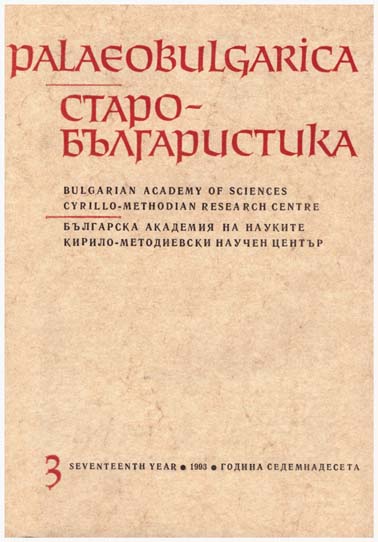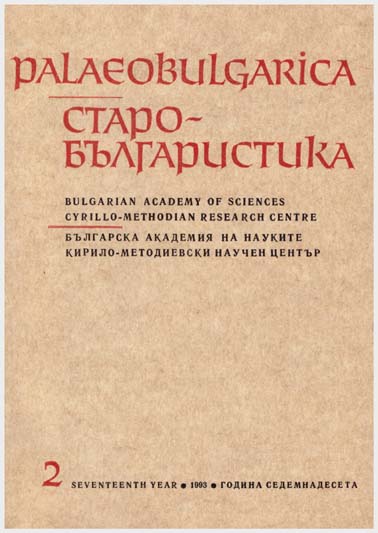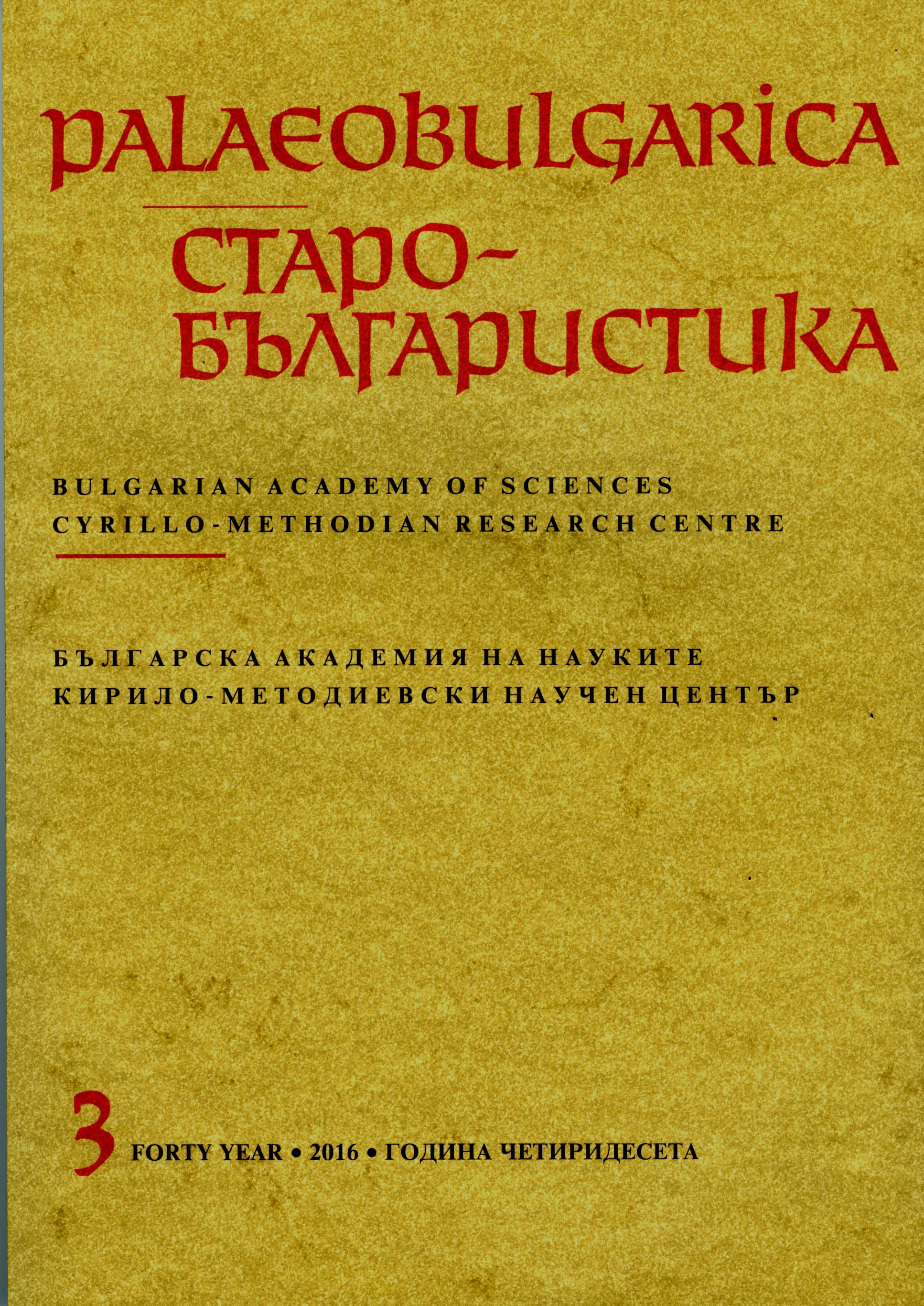
За преводните варианти на κναφεΐον 'тепавица' в Лествицата на Иоан Синайски
The study presents various Slavonic renderings of the Greek word κναφεΐον 'a fuller's shop', which is used metaphorically in the Eighth Step of the Ladder – “On Placidity and Meekness”. That part of the step was the object of systematic collation with its Greek source. The collation shows a development that began with the changing of the word глаждениѥ 'scrubbing off, 'wiping off from the first version (attributed to the Preslav Literary School) to the word гаждениѥ 'rebuke', 'reproach' and went as far as the second fundamental Athonite redaction of the work from the third quarter of the 14th с. (where we see оумывальство 'washing out') and the subsequent change in the Cyprian copy from 1387. If we add the Serbian fundamental revision of the Ladder, a revision made around 1360, we have five variants of the rendering of κναφεΐον. Those variants show the main stages of the history of the text. They can serve as lexical markers as each one of them is represented in a group consisting of dozens of copies with definite textological characteristics.
More...
